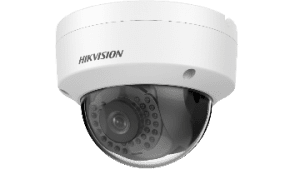10 Reasons to install CCTV in Your Food Court/Kopitiam

1) To deter crime
It is preferable to discourage crime from happening in order to avoid it. The installation of CCTV cameras in your food court will deter shoplifters and thieves from ever thinking about committing a crime. Or at the very least, they will hesitate before doing it.

2) Aids in remote monitoring
Since most crimes are perpetrated while you’re not around, CCTVs let you to keep an eye on the food court area even if you’re not there.
3) Improves employee integrity
The installation of CCTV cameras in your food court makes it harder for dishonest consumers and employees to perpetrate fraud.
4) A helpful service tool
These days, CCTVs are a must since no other technology is as dependable at watching over everyday operations. You are able to monitor every action at your food court without physically being there thanks to CCTV cameras.
5) Affordable and easy to use
Although you may use a variety of alternative monitoring methods to keep your food court secure, most of them are expensive and need to be used by professionals. On the other hand, CCTVs food court is affordable and simple to use, especially for non-technical people.

DS-2CD3141G0-I 4.0 MP IR Network Dome Camera
6) Feel Safe and Secured
Your uncertainty will decrease if your food court is continuously monitored. Being aware of events and the state of the food court is crucial for managers. Furthermore, because you can access the cameras remotely, you won’t need to travel around as much. There will be less physical and emotional tension when you know that everything is under control.
7) Secure all entryways
Because attackers often enter homes via doorways, it’s crucial to secure all of them. To make sure that the person using the door does not obstruct your vision, the cameras at the entrance points should be positioned to the sides rather than directly in front of the door. Use exterior cameras to support the view of the entrances to expand your observing locations. This will guarantee that you have the best possible view of your entry and, in the unlikely event that entrance cameras are obstructed, backup exterior cameras. Additionally, attempt to get a camera with adequate angle coverage.
8) Use exterior cameras to record the widest possible area
The range that outdoor cameras can cover will determine their power. Depending on the size of your complex or yard, they cover a variety of regions and perimeters. For example, a camera spanning 25 feet won’t be helpful if your driveway is 40 feet long since you won’t be able to view the whole area up to the gate. Because they are more potent and have a separate illumination source, infrared cameras are advised for outdoor usage.
Keep in mind the outside parts of your property that contain valuables and install cameras to keep an eye on such regions. Your air conditioner outside is a wonderful illustration. Thieves searching for copper cables find this value to be appealing. In addition to protecting the bushes surrounding your windows, think about installing an armored camera to monitor this region of your house. The windows of most houses often contain little flower beds. Shrubs and bushes are used by thieves as hiding places. To watch and see the region in case of anything, the option is to install cameras all around these locations. Before installing outside cameras, take into account the locations you want to monitor and the regions vulnerable to trespassers.
9) Use outside cameras to cover as much ground as possible. A camera inside
An excellent addition to home security are inside cameras. They are mostly used to keep an eye on different rooms in your house while you are gone. Although there are many variations of these cameras, the majority of inside cameras are modest and unremarkable. Because of this, they may be put anywhere in the room without anybody knowing. These cameras are appropriate for those who spend a lot of time away from home, allowing nannies and babysitters to look after their house. Even when you are away from home, you can keep an eye on activity around your house thanks to these cameras.
The majority of interior cameras contain a memory chip that lets you observe events that happened while you were gone. The storage capacity will vary from camera to camera since it depends on the specific camera. You have the opportunity to watch the actions occurring inside using other inside cameras and the internet. This implies that you may keep an eye on your neighborhood from any location with internet connection.
10) Camera Positioning
Given that vandalism is frequent and individuals sometimes attempt to destroy cameras, many people opt to conceal their cameras. Since technology has advanced, it is now possible to discover cameras that fit easily within ceiling openings, making them invisible to passersby. When the camera is effectively concealed from thieves and intruders, people always feel safe.
CCTV cameras must be placed carefully so that they are protected from the elements and rendered untraceable. For example, cameras need to be shielded from rain and intense glare. These outside elements have the potential to obstruct the cameras’ typical operation.
Another component of CCTV cameras that is significantly impacted by location is cabling. Cameras that are effectively concealed between the ceiling and walls make cabling simple. Even though the cabling system is visible to everybody, deploying high-quality cameras serves no use. Additionally, well-hidden cabling improves your home’s security. This is so that the operation of cameras is not compromised by interference with the cabling infrastructure.
Illumination Proper lighting is essential for CCTV cameras to operate well; otherwise, you won’t be able to see anything. For good viewing, the cameras should be positioned in well-lit spaces. You should think about the kind of camera you need for your house since infrared cameras don’t need light to be seen. Consider infrared cameras for dimly lit places as they don’t need illumination, and regular cameras for well-lit areas since they do. Infrared cameras can capture images in the dark.
It takes certain skills to position cameras, thus anybody cannot do it. Professionals must inspect your house to identify the precise location of the cameras. People with training and expertise in CCTV cameras are qualified to evaluate your property, provide suggestions, and choose where to put cameras in various locations. Camera placement is important for maximizing the effectiveness of your home security system.